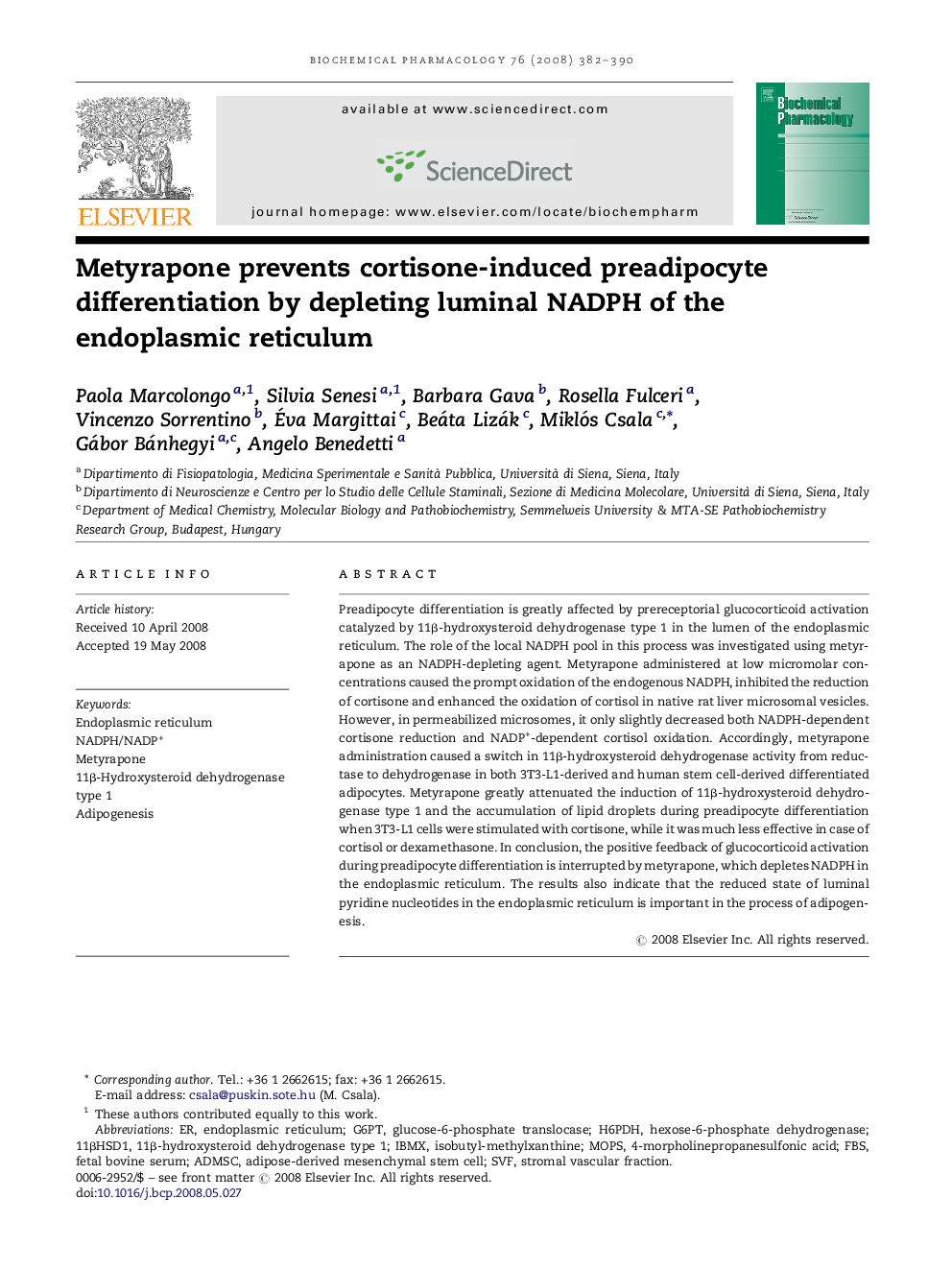| Article ID | Journal | Published Year | Pages | File Type |
|---|---|---|---|---|
| 2515117 | Biochemical Pharmacology | 2008 | 9 Pages |
Preadipocyte differentiation is greatly affected by prereceptorial glucocorticoid activation catalyzed by 11β-hydroxysteroid dehydrogenase type 1 in the lumen of the endoplasmic reticulum. The role of the local NADPH pool in this process was investigated using metyrapone as an NADPH-depleting agent. Metyrapone administered at low micromolar concentrations caused the prompt oxidation of the endogenous NADPH, inhibited the reduction of cortisone and enhanced the oxidation of cortisol in native rat liver microsomal vesicles. However, in permeabilized microsomes, it only slightly decreased both NADPH-dependent cortisone reduction and NADP+-dependent cortisol oxidation. Accordingly, metyrapone administration caused a switch in 11β-hydroxysteroid dehydrogenase activity from reductase to dehydrogenase in both 3T3-L1-derived and human stem cell-derived differentiated adipocytes. Metyrapone greatly attenuated the induction of 11β-hydroxysteroid dehydrogenase type 1 and the accumulation of lipid droplets during preadipocyte differentiation when 3T3-L1 cells were stimulated with cortisone, while it was much less effective in case of cortisol or dexamethasone. In conclusion, the positive feedback of glucocorticoid activation during preadipocyte differentiation is interrupted by metyrapone, which depletes NADPH in the endoplasmic reticulum. The results also indicate that the reduced state of luminal pyridine nucleotides in the endoplasmic reticulum is important in the process of adipogenesis.
